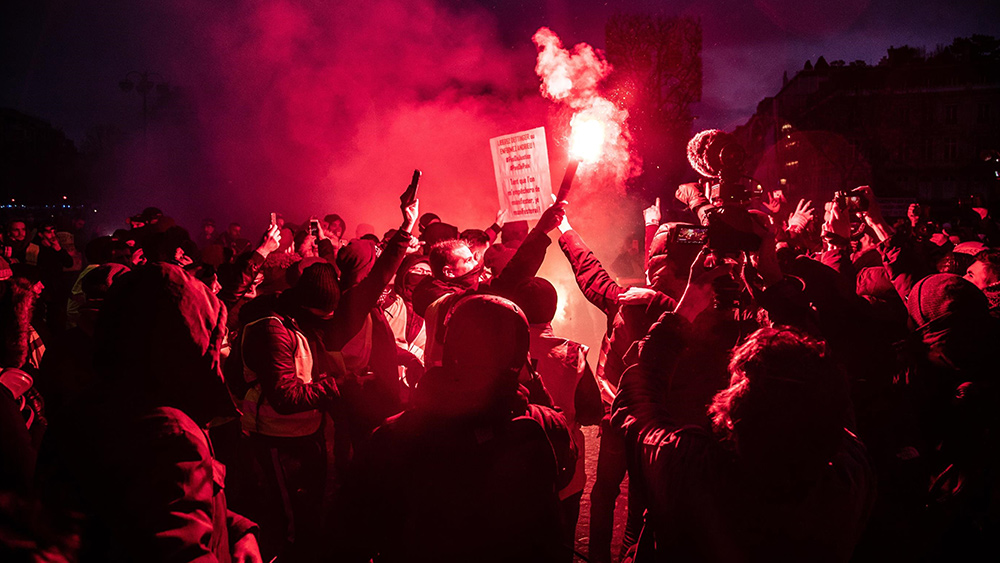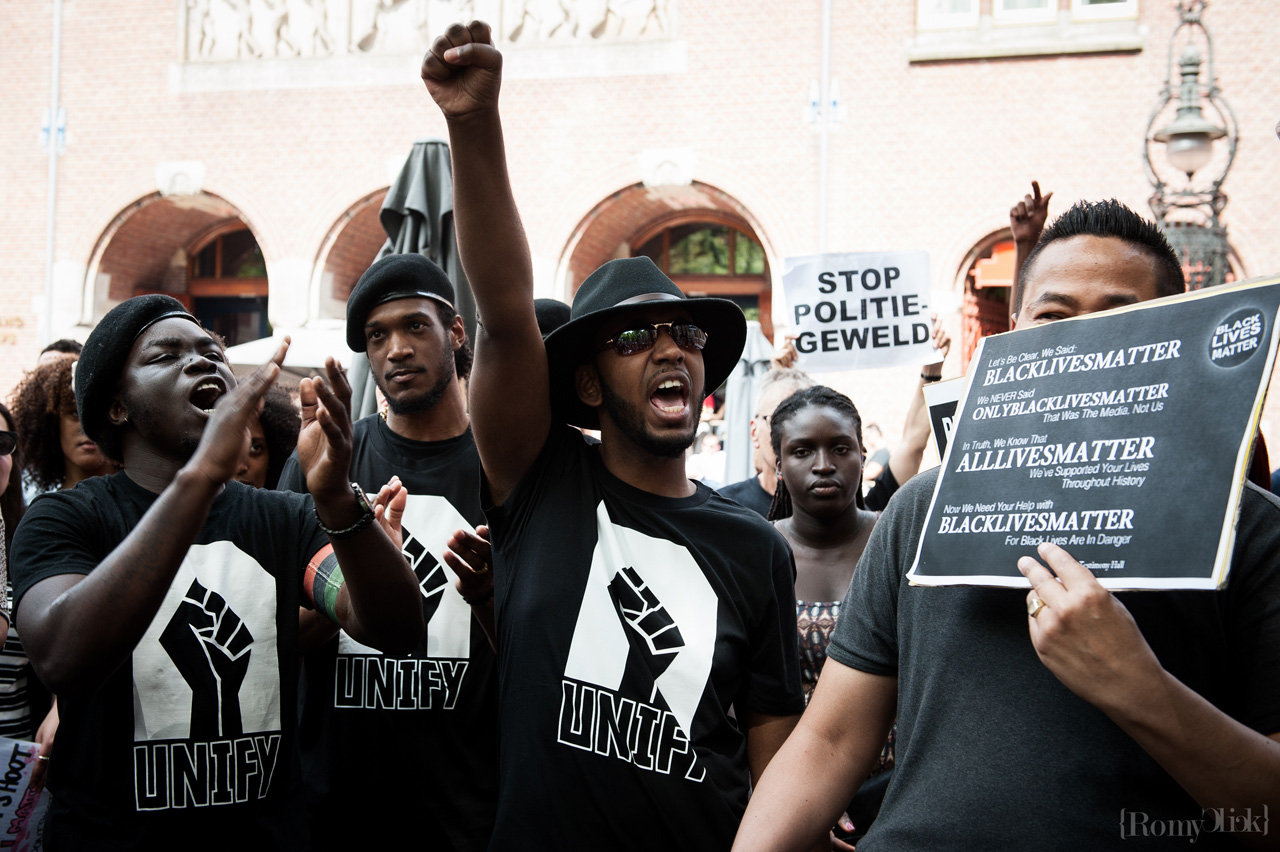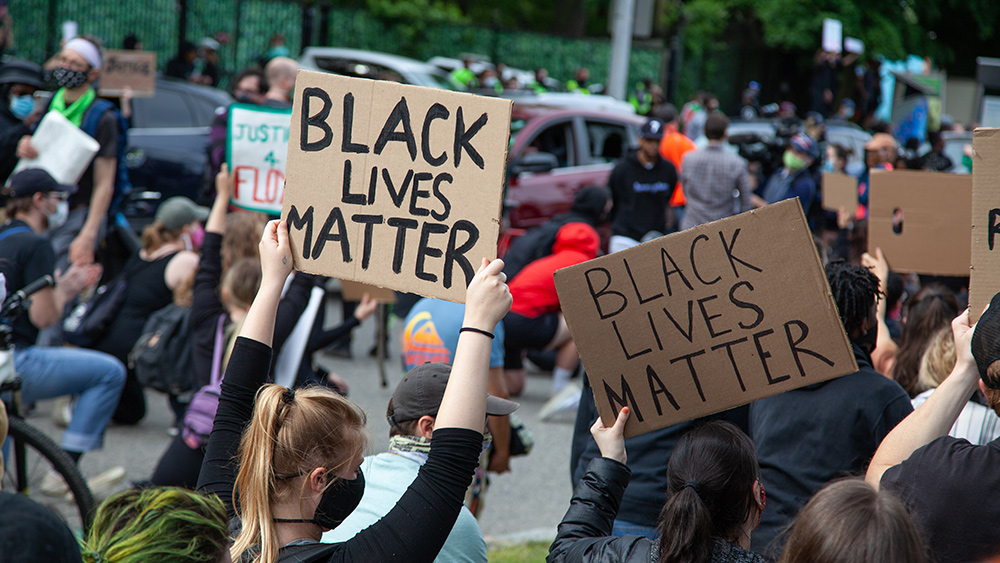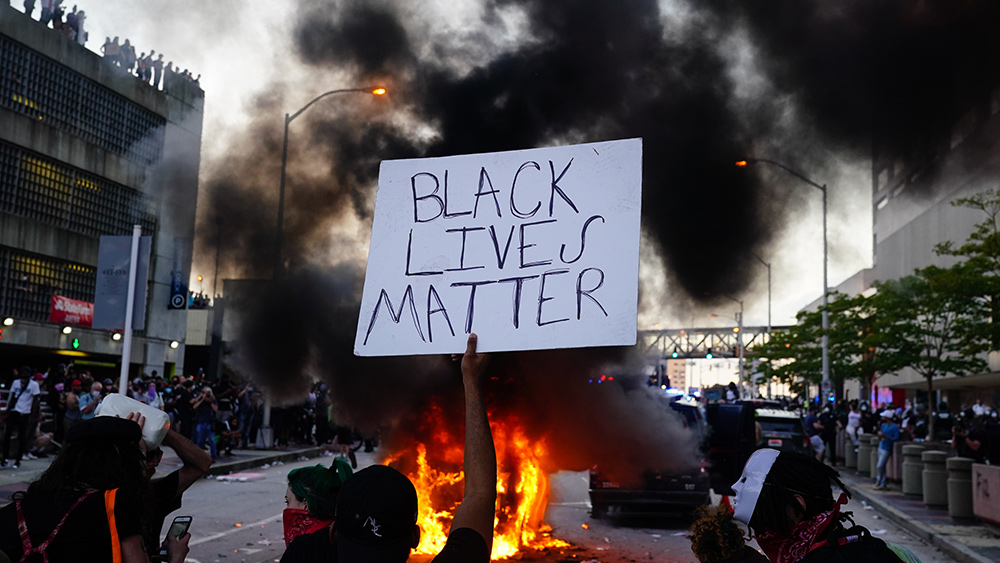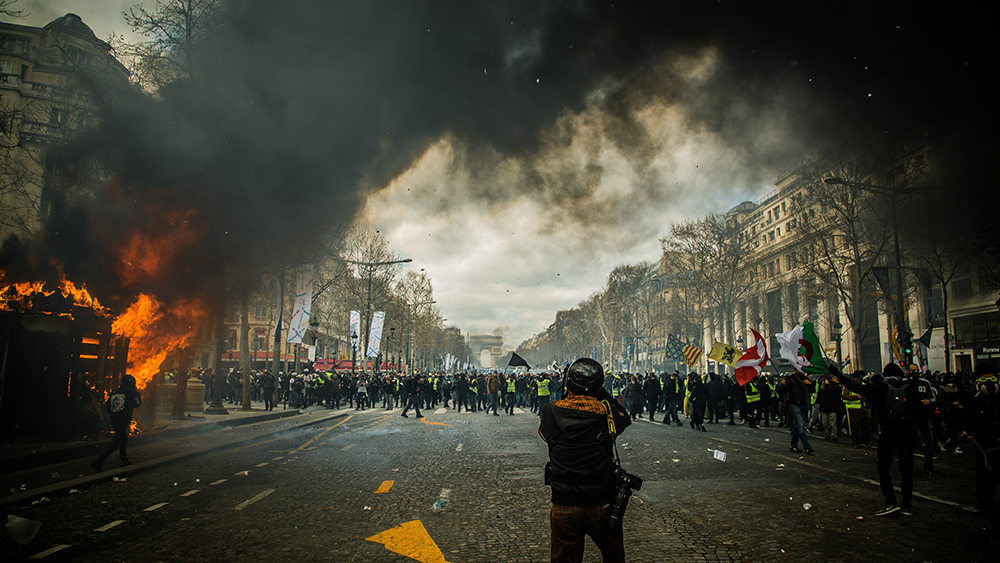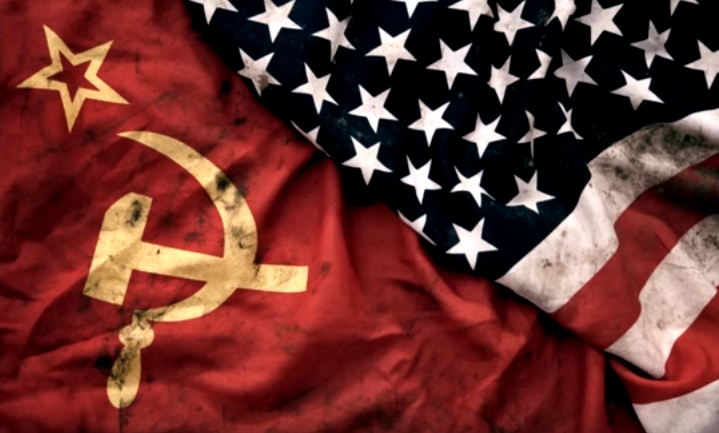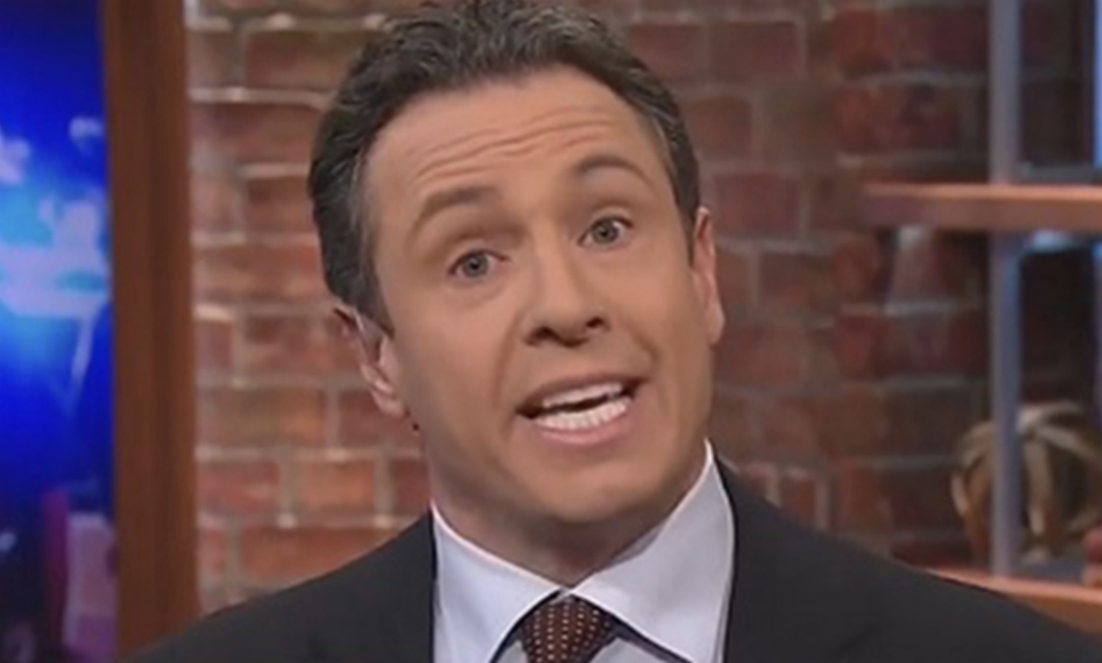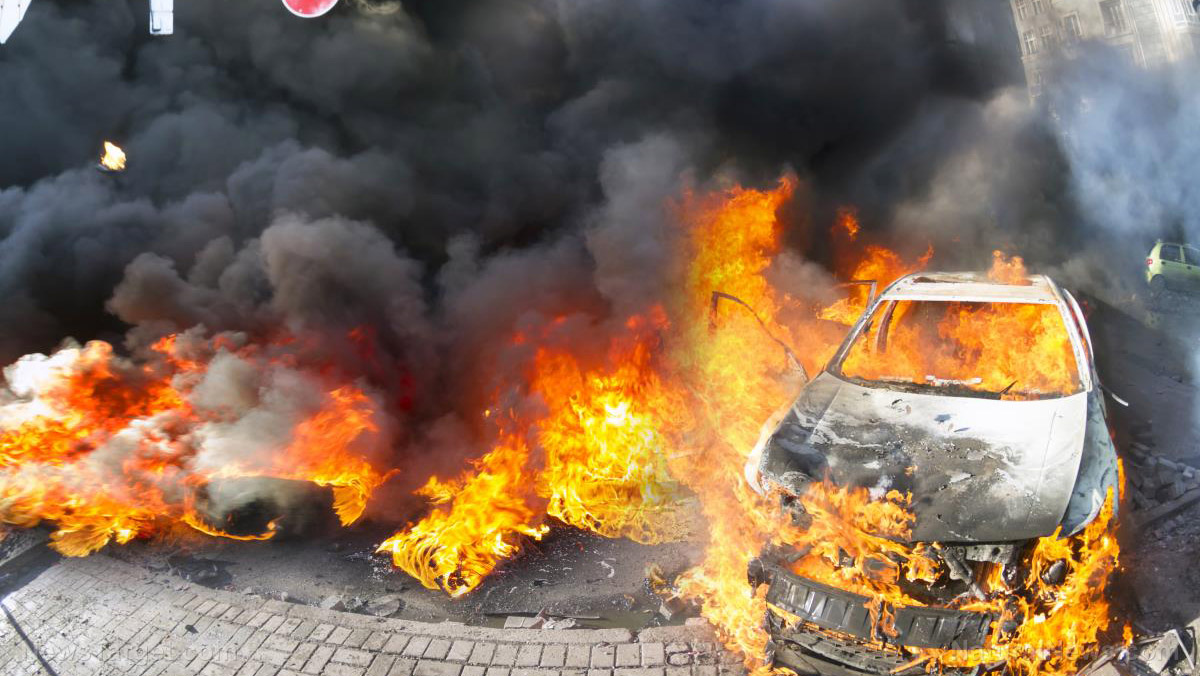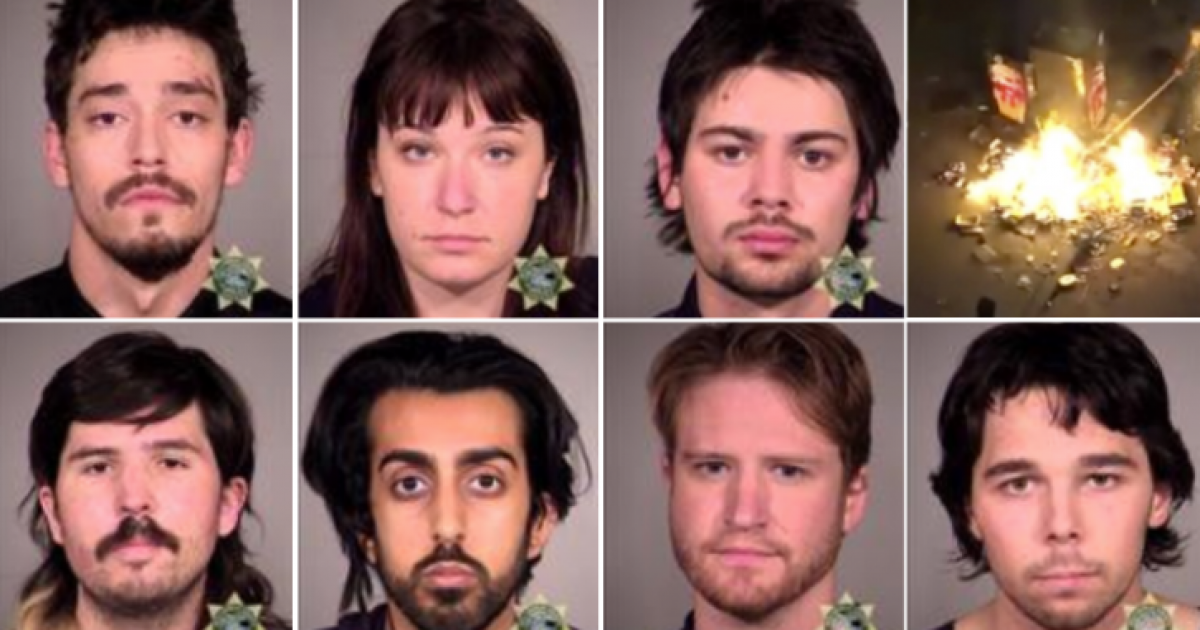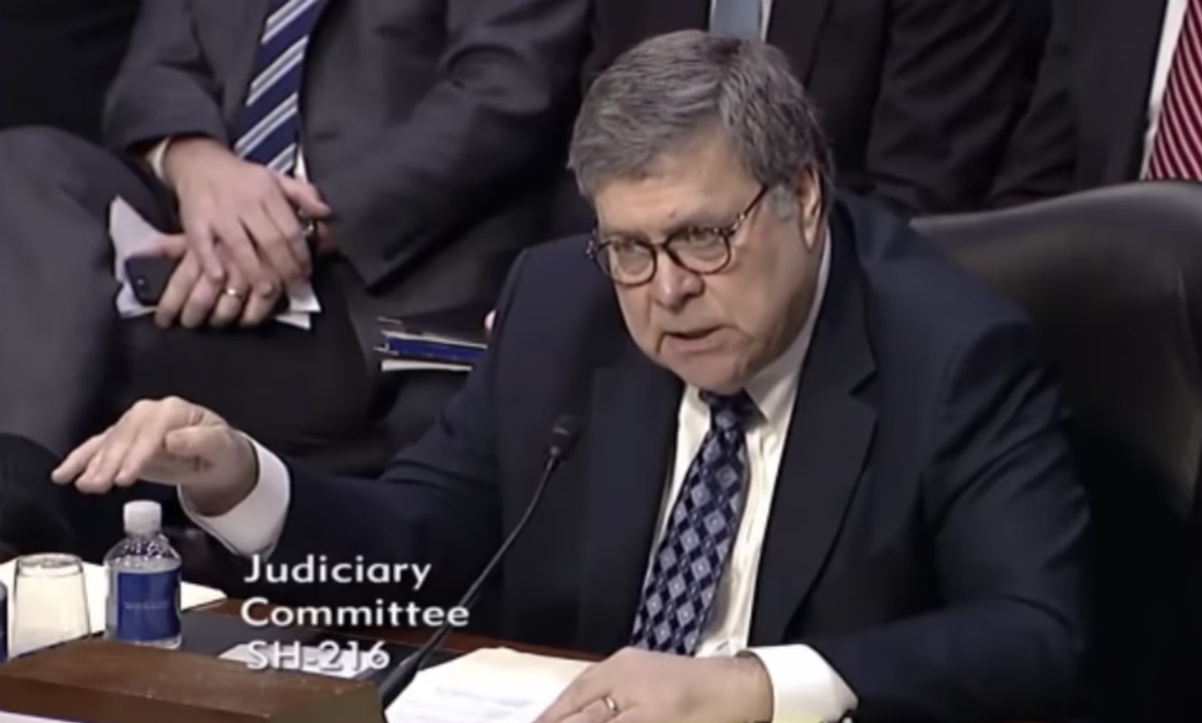A brief history of Antifa: Part I
07/19/2020 / By News Editors

Empirical and anecdotal evidence shows that Antifa is, in fact, highly networked, well-funded and has a global presence. It has a flat organizational structure with dozens and possibly hundreds of local groups.
(Article by Soeren Kern republished from GatestoneInstitute.org)
- Antifa’s stated long-term objective, both in America and abroad, is to establish a communist world order. In the United States, Antifa’s immediate aim is to bring about the demise of the Trump administration.
- A common tactic used by Antifa in the United States and Europe is to employ extreme violence and destruction of public and private property to goad the police into a reaction, which then “proves” Antifa’s claim that the government is “fascist.”
- Antifa is not only officially tolerated, but is being paid by the German government to fight the far right. — Bettina Röhl, German journalist, Neue Zürcher Zeitung, June 2, 2020.
- “Out of cowardice, its members cover their faces and keep their names secret. Antifa constantly threatens violence and attacks against politicians and police officers. It promotes senseless damage to property amounting to vast sums.” — Bettina Röhl, Neue Zürcher Zeitung, June 2, 2020.
U.S. Attorney General William Barr has blamed Antifa — a militant “anti-fascist” movement — for the violence that has erupted at George Floyd protests across the United States. “The violence instigated and carried out by Antifa and other similar groups in connection with the rioting is domestic terrorism and will be treated accordingly,” he said.
Barr also said that the federal government has evidence that Antifa “hijacked” legitimate protests around the country to “engage in lawlessness, violent rioting, arson, looting of businesses, and public property assaults on law enforcement officers and innocent people, and even the murder of a federal agent.” Earlier, U.S. President Donald J. Trump had instructed the U.S. Justice Department to designate Antifa as a terrorist organization.
Academics and media outlets sympathetic to Antifa have argued that the group cannot be classified as a terrorist organization because, they claim, it is a vaguely-defined protest movement that lacks a centralized structure. Mark Bray, a vocal apologist for Antifa in America and author of the book “Antifa: The Anti-Fascist Handbook,” asserts that Antifa “is not an overarching organization with a chain of command.”
Empirical and anecdotal evidence shows that Antifa is, in fact, highly networked, well-funded and has a global presence. It has a flat organizational structure with dozens and possibly hundreds of local groups. Not surprisingly, the U.S. Department of Justice is currently investigating individuals linked to Antifa as a step to unmasking the broader organization.
In the United States, Antifa’s ideology, tactics and goals, far from being novel, are borrowed almost entirely from Antifa groups in Europe, where so-called anti-fascist groups, in one form or another, have been active, almost without interruption, for a century.
What is Antifa?
Antifa can be described as a transnational insurgency movement that endeavors, often with extreme violence, to subvert liberal democracy, with the aim of replacing global capitalism with communism. Antifa’s stated long-term objective, both in America and abroad, is to establish a communist world order. In the United States, Antifa’s immediate aim is to bring about the demise of the Trump administration.
Antifa’s nemeses include law enforcement, which is viewed as enforcing the established order. A common tactic used by Antifa in the United States and Europe is to employ extreme violence and destruction of public and private property to goad the police into a reaction, which then “proves” Antifa’s claim that the government is “fascist.”
Antifa claims to oppose “fascism,” a term it often uses as a broad-brush pejorative to discredit those who hold opposing political beliefs. The traditional meaning of “fascism” as defined by Webster’s Dictionary is “a totalitarian governmental system led by a dictator and emphasizing an aggressive nationalism, militarism, and often racism.”
Antifa holds the Marxist-Leninist definition of fascism which equates it with capitalism. “The fight against fascism is only won when the capitalist system has been shattered and a classless society has been achieved,” according to the German Antifa group, Antifaschistischer Aufbau München.
Germany’s BfV domestic intelligence agency, in a special report on left-wing extremism, noted:
“Antifa’s fight against right-wing extremists is a smokescreen. The real goal remains the ‘bourgeois-democratic state,’ which, in the reading of left-wing extremists, accepts and promotes ‘fascism’ as a possible form of rule and therefore does not fight it sufficiently. Ultimately, it is argued, ‘fascism’ is rooted in the social and political structures of ‘capitalism.’ Accordingly, left-wing extremists, in their ‘antifascist’ activities, focus above all on the elimination of the ‘capitalist system.'”
Matthew Knouff, author of An Outsider’s Guide to Antifa: Volume II, explained Antifa’s ideology this way:
“The basic philosophy of Antifa focuses on the battle between three basic forces: fascism, racism and capitalism — all three of which are interrelated according to Antifa…. with fascism being considered the final expression or stage of capitalism, capitalism being a means to oppress, and racism being an oppressive mechanism related to fascism.”
In an essay, “What Antifa and the Original Fascists Have In Common,” Antony Mueller, a German professor of economics who currently teaches in Brazil, described how Antifa’s militant anti-capitalism masquerading as anti-fascism reveals its own fascism:
“After the left has pocketed the concept of liberalism and turned the word into the opposite of its original meaning, the Antifa-movement uses a false terminology to hide its true agenda. While calling themselves ‘antifascist’ and declaring fascism the enemy, the Antifa itself is a foremost fascist movement.
“The members of Antifa are not opponents to fascism but themselves its genuine representatives. Communism, Socialism and Fascism are united by the common band of anti-capitalism and anti-liberalism.
“The Antifa movement is a fascist movement. The enemy of this movement is not fascism but liberty, peace and prosperity.”
Antifa’s Ideological Origins
The ideological origins of Antifa can be traced back to the Soviet Union roughly a century ago. In 1921 and 1922, the Communist International (Comintern) developed the so-called united front tactic to “unify the working masses through agitation and organization” … “at the international level and in each individual country” against “capitalism” and “fascism” — two terms that often were used interchangeably.
The world’s first anti-fascist group, Arditi del Popolo (People’s Courageous Militia), was founded in Italy in June 1921 to resist the rise of Benito Mussolini’s National Fascist Party, which itself was established to prevent the possibility of a Bolshevik revolution on the Italian Peninsula. Many of the group’s 20,000 members, consisting of communists and anarchists, later joined the International Brigades during the Spanish Civil War (1936–39).
In Germany, the Communist Party of Germany established the paramilitary group Roter Frontkämpferbund (Red Front Fighters League) in July 1924. The group was banned due to its extreme violence. Many of its 130,000 members continued their activities underground or in local successor organizations such as the Kampfbund gegen den Faschismus (Fighting-Alliance Against Fascism).
In Slovenia, the militant anti-fascist movement TIGR was established in 1927 to oppose the Italianization of Slovene ethnic areas after the collapse of the Austro-Hungarian Empire. The group, which was disbanded in 1941, specialized in assassinating Italian police and military personnel.
In Spain, the Communist Party established the Milicias Antifascistas Obreras y Campesinas (Antifascist Worker and Peasant Militias), which were active in the 1930s.
The modern Antifa movement derives its name from a group called Antifaschistische Aktion, founded in May 1932 by Stalinist leaders of the Communist Party of Germany. The group was established to fight fascists, a term the party used to describe all of the other pro-capitalist political parties in Germany. The primary objective of Antifaschistische Aktion was to abolish capitalism, according to a detailed history of the group. The group, which had more than 1,500 founding members, went underground after Nazis seized power in 1933.
A German-language pamphlet — “80 Years of Anti-Fascist Actions” (80 Jahre Antifaschistische Aktion)” — describes in minute detail the continuous historical thread of the Antifa movement from its ideological origins in the 1920s to the present day. The document states:
“Antifascism has always fundamentally been an anti-capitalist strategy. This is why the symbol of the Antifaschistische Aktion has never lost its inspirational power…. Anti-fascism is more of a strategy than an ideology.”
During the post-war period, Germany’s Antifa movement reappeared in various manifestations, including the radical student protest movement of the 1960s, and the leftist insurgency groups that were active throughout the 1970s, 1980s and 1990s.
The Red Army Faction (RAF), also known as the Baader-Meinhof Gang, was a Marxist urban guerrilla group that carried out assassinations, bombings and kidnappings aimed at bringing revolution to West Germany, which the group characterized as a fascist holdover of the Nazi era. Over the course of three decades, the RAF murdered more than 30 people and injured over 200.
After the collapse of the communist government in East Germany in 1989-90, it was discovered that the RAF had been given training, shelter, and supplies by the Stasi, the secret police of the former communist regime.
John Philip Jenkins, Distinguished Professor of History at Baylor University, described the group’s tactics, which are similar to those used by Antifa today:
“The goal of their terrorist campaign was to trigger an aggressive response from the government, which group members believed would spark a broader revolutionary movement.”
RAF founder Ulrike Meinhof explained the relationship between violent left-wing extremism and the police: “The guy in uniform is a pig, not a human being. That means we don’t have to talk to him and it is wrong to talk to these people at all. And of course, you can shoot.”
Bettina Röhl, a German journalist and daughter of Meinhof, argues that the modern Antifa movement is a continuation of the Red Army Faction. The main difference is that, unlike the RAF, Antifa’s members are afraid to reveal their identities. In a June 2020 essay published by the Swiss newspaper Neue Zürcher Zeitung, Röhl also drew attention to the fact that Antifa is not only officially tolerated, but is being paid by the German government to fight the far right:
“The RAF idolized the communist dictatorships in China, North Korea, North Vietnam, in Cuba, which were transfigured by the New Left as better countries on the right path to the best communism….
“The flourishing left-wing radicalism in the West, which brutally strikes at the opening of the European Central Bank headquarters in Frankfurt, at every G-20 summit or every year on May 1 in Berlin, has achieved the highest level of establishment in the state, not least thanks to the support by quite a few MPs from political parties, journalists and relevant experts.
“Compared to the RAF, the militant Antifa only lacks prominent faces. Out of cowardice, its members cover their faces and keep their names secret. Antifa constantly threatens violence and attacks against politicians and police officers. It promotes senseless damage to property amounting to vast sums. Nevertheless, MP Renate Künast (Greens) recently complained in the Bundestag that Antifa groups had not been adequately funded by the state in recent decades. She was concerned that ‘NGOs and Antifa groups do not always have to struggle to raise money and can only conclude short-term employment contracts from year to year.’ There was applause for this from Alliance 90 / The Greens, from the left and from SPD deputies.
“One may ask the question of whether Antifa is something like an official RAF, a terrorist group with money from the state under the guise of ‘fighting against the right.'”
Germany’s BfV domestic intelligence agency explains Antifa’s glorification of violence:
“For left-wing extremists, ‘Capitalism’ is interpreted as triggering wars, racism, ecological disasters, social inequality and gentrification. ‘Capitalism’ is therefore more than just a mere economic order. In left-wing extremist discourse, it determines the social and political form as well as the vision of a radical social and political reorganization. Whether anarchist or communist: Parliamentary democracy as a so-called bourgeois form of rule should be ‘overcome’ in any case.
“For this reason, left-wing extremists usually ignore or legitimize human rights violations in socialist or communist dictatorships or in states that they allegedly see threatened by the ‘West.’ To this day, both orthodox communists and autonomous activists justify, praise and celebrate the left-wing terrorist Red Army Faction or foreign left-wing terrorists as alleged ‘liberation movements’ or even ‘resistance fighters.'”
Meanwhile, in Britain, Anti-Fascist Action (AFA), a militant anti-fascist group founded in 1985, gave birth to the Antifa movement in the United States. In Germany, the Antifaschistische Aktion-Bundesweite Organisation (AABO) was founded in 1992 to combine the efforts of smaller Antifa groups scattered around the country.
In Sweden, Antifascistisk Aktion (AFA), a militant Antifa group founded in 1993, established a three-decade track record for using extreme violence against its opponents. In France, the Antifa group L’Action antifasciste, is known for its fierce opposition to the State of Israel.
After the fall of the Berlin Wall in 1989 and the collapse of communism in 1990, the Antifa movement opened a new front against neoliberal globalization.
Attac, established in France in 1989 to promote a global tax on financial transactions, now leads the so-called alter-globalization movement, which, like the Global Justice Movement, is opposed to capitalism. In 1999, Attac was present in Seattle during violent demonstrations that led to the failure of WTO negotiations. Attac also participated in anti-capitalist demonstrations against the G7, the G20, the WTO, and the war in Iraq. Today, the association is active in 40 countries, with more than a thousand local groups and hundreds of organizations supporting the network. Attac’s decentralized and non-hierarchical organizational structure appears to be the model being used by Antifa.
In February 2016, the International Committee of the Fourth International advanced the political foundations of the global anti-war movement, which, like Antifa, blames capitalism and neoliberal globalism for the existence of military conflict:
“The new anti-war movement must be anti-capitalist and socialist, since there can be no serious struggle against war except in the fight to end the dictatorship of finance capital and the economic system that is the fundamental cause of militarism and war.”
In July 2017, more than 100,000 anti-globalization and Antifa protesters converged on the German city of Hamburg to protest the G20 summit. Leftist mobs laid waste to the city center. An Antifa group called “G20 Welcome to Hell” bragged about how it was able to mobilize Antifa groups from across the world:
“The summit mobilizations have been precious moments of meeting and co-operation of left-wing and anti-capitalist groups and networks from all over Europe and world-wide. We have been sharing experiences and fighting together, attending international meetings, being attacked by cops supported by the military, re-organizing our forces and fighting back. Anti-globalization movement has changed, but our networks endure. We are active locally in our regions, cities, villages and forests. But we are also fighting trans-nationally.”
Germany’s domestic security service, in an annual report, added:
“Left-wing extremist structures tried to shift the public debate about the violent G20 summit protests in their favor. With the distribution of photos and reports of allegedly disproportionate police measures during the summit protests, they promoted an image of a state that denounced legitimate protests and put them down with police violence. Against such a state, they said, ‘militant resistance’ is not only legitimate, but also necessary.”
Part II of this series will examine the activities of Antifa in Germany and the United States.
Read more at: GatestoneInstitute.org or Antifa.news
Tagged Under: antifa, bias, communism, extremism, extremists, left cult, Left-wing, lunatics, militants, politics, propaganda, right-wing, rioting, riots, terrorism, terrorists, violence
RECENT NEWS & ARTICLES
COPYRIGHT © 2017 RIOTING NEWS



